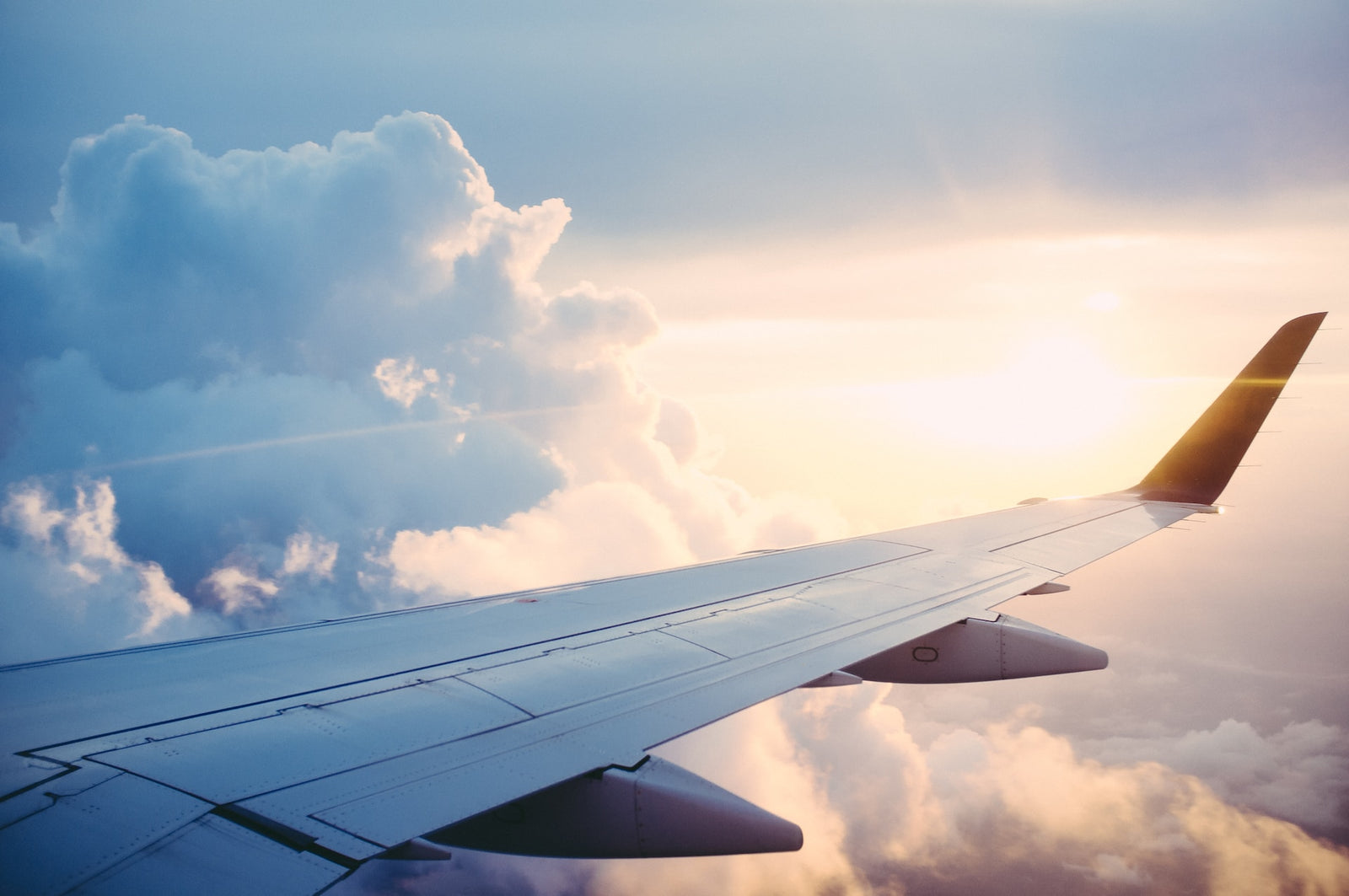We travel much more efficiently now than ever before.
Air travel is by far the quickest mode of travel – so quick, in fact, that our bodies can’t always keep up.
Jet lag, sometimes called jet lag disorder, is a temporary sleep disruption that affects those who quickly travel across multiple time zones.
We’ve rounded up some quick hacks that can help you overcome jet lag fast and get back to your usual self.
But before we dive into the potential fixes, we must further understand the problem.
Jet lag is not only annoying, it may cause you to feel sick or confused.
What is Jet Lag?
Time flies when you travel by plane.
Literally…you may land in a time zone that’s opposite of the one you’re used to (depending on where you’re traveling).
This change in time throws off our internal clock, or circadian rhythm, which is responsible for signaling when we feel tired.
Many of us travel for both business and pleasure, so the need to fly isn’t going anywhere anytime soon.
In fact, 60 percent of travelers say that travel boosts creativity and productivity, despite the jet lag.

Jet lag is common in long-haul travelers: up to 70 percent of them experience some form of this condition.
On average, it takes people around one day to account for every hour of time change caused due to travel.
Therefore, if you travel across two time zones, expect to require at least two days for your internal clock to adjust to the time at your destination.
When you’re out of sync with your new environment and your body is still synced to your normal time zone, symptoms of jet lag follow.
Common symptoms include:
- Temporary insomnia
- Headaches
- Fatigue and intense drowsiness
- Poor focus and concentration
- Upset stomach
- Reduced appetite
- Irritability, feeling “off” or uneasy
- Impaired physical function and performance
- Sleep paralysis
Eventually, our circadian rhythm adjusts to changes in our environment.
However, this adjustment is easier while traveling in one direction versus another.
Hack #1: Plan Further Ahead if Traveling East
Our master clock is better at “resetting” when we travel in one direction as opposed to another.
The body’s master clock is a structure at the base of the brain called the suprachiasmatic nucleus, or SCN.
This structure, located within the hypothalamus, regulates most circadian rhythms within our body, including sleep.
When we view light from the environment, the SCN interprets these light cues and tells us whether to feel alert and awake or tired and groggy.
Studies of lab animals show that delaying our internal clock is easier than advancing it, so traveling east is theoretically harder on our sleep patterns than traveling west.
Therefore, if you plan to travel east, some extra preparation is required to prevent jet lag.
While there’s no hard-and-fast rule for how long jet lag will last, a jet lag calculator can help you prepare for how you should shift your body clock to reduce or prevent jet lag.
Hack #2: Use a Jet Lag Calculator
The duration of your jet lag depends on several factors, like your unique natural rhythms, your overall health, how far you traveled, and how much sleep you’ve recently gotten.
Sleepopolis created a Jet Lag Calculator that specifically helps travelers adjust their sleep schedule in preparation for travel across time zones.
What’s more, the suggestions provided by this jet lag calculator are clinically proven to work.
Shifting your body clock before travel can sometimes prevent jet lag altogether, depending on when you start.
Simply start by entering your “Flying From” and “Flying To” destinations into the calculator.
For the sake of this example, we’ll enter “Sacramento, CA” as the “Flying From” city and “Baltimore, MD” as the “Flying To” city.
From here, select your flight departure and arrival times.

Finally, select the time of night you typically go to bed and the time of morning you usually wake up.

Once you hit “Calculate,” the Jet Lag Calculator will create a formula to help you prepare for the schedule change several days before your planned travel date.

Suggestions include sleep schedule durations and times, including hours best for sleep and hours best for light exposure.
Dark blue hours on the schedule labeled “best for sleep” mean that sleep is ideal for this time period. On the day of departure, if no suggested sleep times are labeled, sleep as needed.
Orange hours labeled “ideal for light exposure” mean to try to get as much light exposure as possible. Spend time outdoors, sit next to a bright window, or seek artificial light for as long as convenient during these times.
Aside from these suggested schedule guidelines, this Jet Lag Calculator suggests staying hydrated on the flight by drinking water rather than tea, coffee, or alcohol.
Upon arrival, continue to hydrate. Shower and nap for 20 minutes if needed.
Follow the suggestions provided by this Jet Lag Calculator for your specific travel plans and you’ll feel refreshed in no time!
Beyond shifting your sleep habits prior to travel, you may also want to toss some melatonin supplements into your carry-on bag.
Hack #3: Take Melatonin Supplements
Remember how we mentioned that the brain’s internal clock uses light cues to determine our circadian rhythm?
The sleep hormone melatonin plays an important role in sending these signals.
Melatonin is a hormone produced by the pineal gland that helps to naturally promote sleep by helping you feel tired.
By taking melatonin supplements, you may be able to increase the levels of this hormone within the body temporarily, bringing on sleep.

Melatonin has shown specific promise for the treatment of insomnia caused by jet lag, making it a huge tool for overcoming sleep issues caused by air travel.
SomniFix Melatonin offers natural sleep support that reduces symptoms of jet lag, helps you fall asleep faster, and improves sleep quality so you can wake up feeling refreshed – no matter the time zone you’re in.
However, regardless of how much you prepare before and after a flight, you may still need to sleep on the plane.
Here’s how to get the quality shut-eye you need despite limited legroom and strangers hogging the armrest.
Bonus Hack: Carry On Accessories For Better Mid-Flight Sleep
Sometimes, sleeping on a flight is unavoidable.
However, it’s not exactly easy to achieve between the stress of security prior to flying, turbulence, and loud noises on the plane.
That said, a couple of accessories can help make sleep more achievable in a “turbulent” environment.
An eye mask easily blocks out added sunlight in the cabin that might be keeping you awake.
Noise-canceling headphones are a godsend for blocking out upset kiddos on the plane, roaring engine noises, and loud fellow passengers.
A weighted blanket can help provide deep-pressure stimulation that encourages quality sleep.
Beyond that, mouth tape is an unexpected yet effective tool for snoring prevention while you rest next to others.

While you may get strange looks from other passengers, you’ll sleep better than any of the rest of them, too!
Mouth tape prevents mouth breathing during sleep, which leads to better oxygenation, snoring prevention, and enhanced sleep quality.
Since mouth tape allows for nasal breathing only, you’ll reap the benefits of nasal breathing over mouth breathing, such as nitric oxide for enhanced relaxation after the stresses of a busy travel day.
SomniFix was created with all skin types in mind. Our Strips are hypoallergenic, latex-free, and gluten-free, so you’ll steer clear of any skin irritation or rashes.
Moreover, our Strips feature a patented central breathing vent that helps you acclimate to the sensation of mouth taping with an added mouth breathing option if you become congested on the flight.
Once you arrive at your destination, continue to tape each night for your most restorative sleep yet.
Overcome jet lag with SomniFix and continue to fly your sleep quality to new heights night after night!




